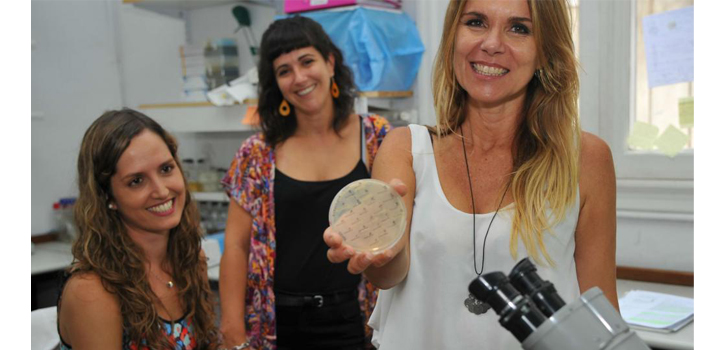Investigadoras del CIQUIBIC descubren una bacteria aislada de suelo contaminado por metales pesados
La Dra. Andrea Smania junto a Adela Luján y Sofia Feliziani, integrantes de su grupo de investigación en el CIQUIBIC, describieron el genoma de una cepa bacteriana aislada del suelo del patio de un taller mecánico en el barrio Las Flores de la ciudad de Córdoba. Allí, el dueño del taller arrojaba el aceite usado de los autos , un residuo peligroso ya que contiene altos niveles de metales pesados e hidrocarburos.
La Dra. Smania y su equipo identificaron en esta muestra la presencia de Pseudomonas aeruginosa, una bacteria ambiental presente en el suelo y en el agua pero que también es un patógeno oportunista en humanos responsable del 10% de las infecciones hospitalarias. Con el interés de entender cómo esta bacteria cordobesa tenía semejante capacidad de adaptación, lograron secuenciar su genoma e identificar la presencia de “casetes” de genes que les permiten resistir a metales pesados. Esa información puede ser muy útil para investigadores que trabajan en biorremediación y también para entender cómo el patógeno infecta a los humanos y resiste la acción de los antibióticos. El trabajo fue publicado recientemente en la revista Genome Announcements, de la Sociedad de Microbiología de Estados Unidos.
FUENTE: La Voz del Interior (ver nota completa)
Dr. Andrea Smania, together with Adela Luján and Sofia Feliziani, members of their research group at CIQUIBIC, described the genome of a bacterial strain isolated from the floor of a mechanical workshop at “Las Flores” neighborhood in the city of Córdoba. There, the workshop owner threw the used car oil, a very hazardous waste as it contains high levels of heavy metals and hydrocarbons.
Dr. Smania and her team identified in this sample the presence of Pseudomonas aeruginosa, an environmental bacterium present in soil and water but also an opportunistic human pathogen responsible for the 10% of nosocomial infections. With the interest of understanding how this local bacterium had such adaptive capacity, they were able to sequence their genome and identify the presence of “cassettes” of genes that allow bacteria to resist heavy metals. This information is not only very useful for researchers working in the bioremediation field but also to understand how the pathogen infects humans and resists the action of antibiotics. The work was recently published in the journal “Genome Announcements”, of the Society of Microbiology of the United States.



